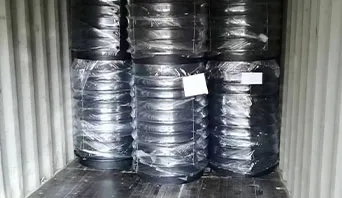
نوفمبر . 02, 2024 04:56 Back to list
steam boiler repair
Understanding Steam Boiler Repair Essential Insights
Steam boilers play a crucial role in various industries, including manufacturing, power generation, and even residential heating. Their ability to convert water into steam for energy production and heating is indispensable. However, like any industrial equipment, steam boilers can experience issues that necessitate repairs. Understanding the basics of steam boiler repair can help operators ensure safety, efficiency, and longevity in their systems.
Common Steam Boiler Issues
Before diving into repair techniques, it's essential to recognize common problems that may arise with steam boilers. Some typical issues include
1. Leaks Over time, seals and connections can deteriorate, leading to water or steam leaks. These leaks not only waste energy but can also pose safety risks.
2. Corrosion Water can lead to corrosion within the boiler tubes and components, reducing their integrity and efficiency. Regular maintenance can help identify early signs of corrosion.
3. Pressure Problems Boilers operate under pressure. If pressure levels are too high or too low, it can indicate underlying issues with safety valves or pressure gauges that need immediate attention.
5. Control System Failures Modern steam boilers often use sophisticated control systems. Failures in these systems may lead to inadequate steam production or unsafe operating conditions.
The Repair Process
steam boiler repair

When it comes to repairing steam boilers, having a systematic approach is essential
1. Safety First Before beginning any repair, ensure that the boiler is shut down, and all residual pressure has been relieved. Safety equipment, such as gloves and goggles, should always be used.
2. Inspection Conduct a thorough inspection to identify the root cause of the problem. This may involve checking for leaks, examining the water quality, and ensuring all components are functional.
3. Component Replacement If specific parts are found to be defective, such as valves, gauges, or gaskets, these should be replaced with high-quality components to ensure reliability.
4. Cleaning Remove any sediment buildup and conduct a thorough cleaning of the internal components. This can significantly improve efficiency and reduce wear on the boiler.
5. Testing Once repairs are completed, it’s vital to test the boiler under controlled conditions to ensure that all systems are functioning correctly. Monitor pressure levels, check for leaks, and ensure that the control systems operate seamlessly.
6. Documentation Keep detailed records of all maintenance and repairs. This documentation can be invaluable for future maintenance and for compliance with regulatory standards.
Conclusion
Steam boiler repair is an essential aspect of maintaining efficient and safe operations in various industries. Regular maintenance, prompt repairs, and a keen understanding of common issues can prevent catastrophic failures and ensure optimal performance. As technologies advance, staying informed about the latest innovations in steam boiler repair and maintenance practices can further enhance operational efficiency. Always consider consulting a professional service if significant repairs are required, as they bring expertise and experience crucial for comprehensive boiler maintenance.
-
How to Increase Steam Pressure in Boilers Expert Tips & Fixes
NewsMay.14,2025
-
Steam Boiler vs Water Boiler Efficiency, Pressure & Temperature Guide
NewsMay.14,2025
-
How to Adjust Steam Boiler Water Level Expert Tips & Safety Guide
NewsMay.13,2025
-
Hot Water Boiler Problems Solved Fast Repairs & Expert Tips
NewsMay.13,2025
-
Affordable Hot Water Boiler Replacement Cost-Efficient Solutions
NewsMay.13,2025
-
Optimal Boiler Temperature for Hot Water Efficiency & Settings Guide
NewsMay.12,2025
Related PRODUCTS






















